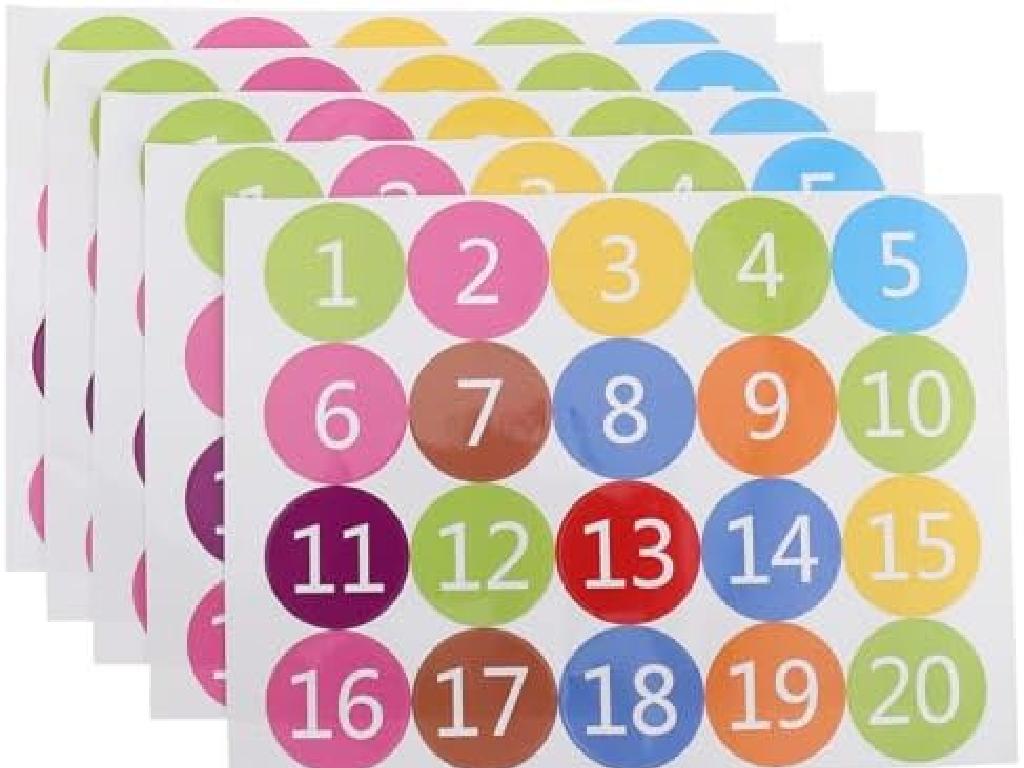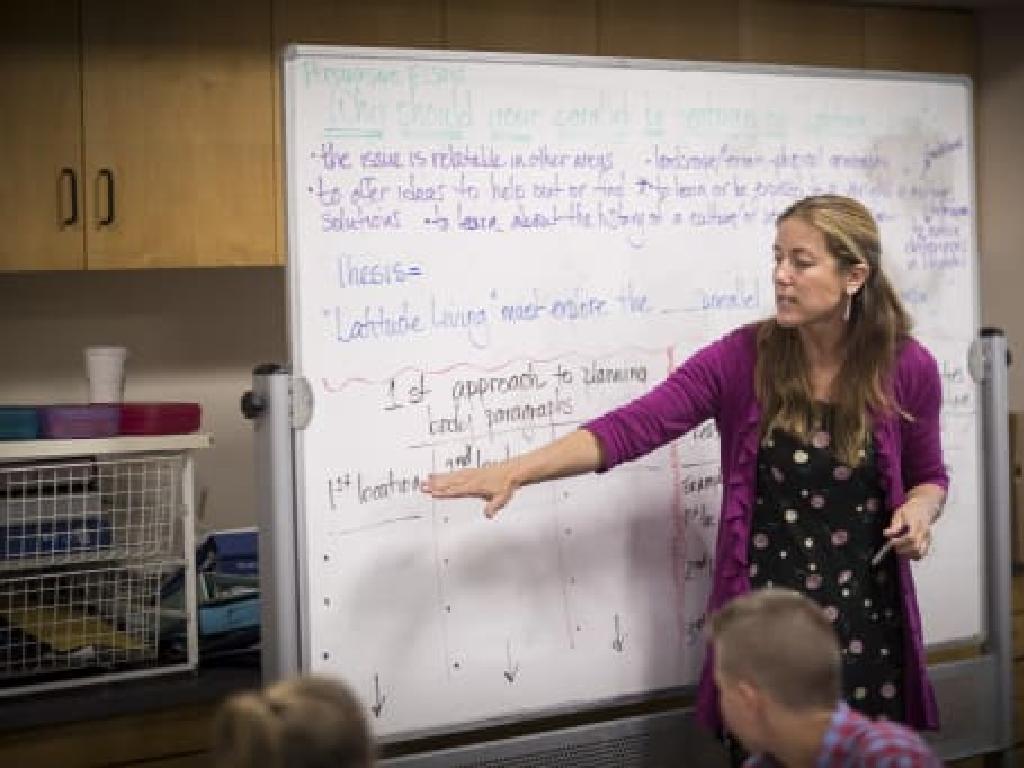Organization In The Human Body: The Heart And The Circulatory System
Subject: Science
Grade: Sixth grade
Topic: Anatomy And Physiology
Please LOG IN to download the presentation. Access is available to registered users only.
View More Content
Exploring the Heart & Circulatory System
– Anatomy & Physiology intro
– Body’s organizational levels
– Cells form tissues, tissues form organs, organs form systems
– Heart: Central to circulation
– The heart pumps blood throughout the body
– Circulatory system functions
– Delivers oxygen & nutrients, removes waste
|
This slide introduces students to the basics of anatomy and physiology, setting the stage for a deeper dive into the human body’s complex structure. Begin by explaining the concept of anatomy and physiology, emphasizing the study of the body’s structures and their functions. Highlight the organization of the body from the smallest cellular level to the complexity of organ systems. Focus on the heart as the central organ in the circulatory system, responsible for pumping blood. Discuss the circulatory system’s role in delivering essential substances like oxygen and nutrients to cells and removing waste products. Engage students by asking them to consider how their bodies feel during exercise, which can be related to increased heart rate and blood circulation.
Exploring Anatomy & Physiology
– Anatomy: Study of body structure
– Examines the physical form, like bones and muscles
– Physiology: Study of body function
– Looks at how body parts work and relate to each other
– Interconnection of anatomy & physiology
– Understanding structure (anatomy) helps explain function (physiology)
– Relevance to the human heart & circulatory system
– The heart’s structure allows it to pump blood; circulatory system function is to deliver oxygen
|
This slide introduces the foundational concepts of anatomy and physiology, setting the stage for a deeper dive into the human heart and circulatory system. Anatomy is the branch of science concerned with the bodily structure of humans, animals, and other living organisms, especially as revealed by dissection and the separation of parts. Physiology is the scientific study of functions and mechanisms in a living system. By understanding the interplay between anatomy and physiology, students can grasp how the structure of the heart and blood vessels relates to their role in circulating blood throughout the body. Emphasize the importance of both anatomy and physiology in understanding how the body operates as a whole, and specifically how the heart functions as part of the circulatory system.
Our Heart: The Vital Pump
– Heart’s location and size
– Located in the chest, left of center; about the size of a fist
– Role in the circulatory system
– Pumps blood throughout the body, supplying oxygen and nutrients
– Understanding heart chambers
– Four chambers: two atria and two ventricles that manage blood flow
– Function of heart valves
– Valves ensure blood flows in the right direction and prevent backflow
|
This slide introduces the heart as a central component of the circulatory system. Begin by describing the heart’s location in the thoracic cavity, slightly to the left of center, and compare its size to that of the student’s fist to give them a tangible reference. Explain the heart’s critical role in pumping blood throughout the body, delivering essential oxygen and nutrients to tissues and organs. Discuss the four chambers of the heart: the atria (upper chambers) and ventricles (lower chambers), and how they work in a coordinated fashion to manage blood flow. Lastly, cover the function of the heart’s valves, which are crucial in maintaining the unidirectional flow of blood and preventing any backward movement. Encourage students to visualize the heart as a pump in a large system, emphasizing the importance of each part in ensuring the system operates smoothly.
Journey of Blood Through the Heart
– Blood’s pathway through the heart
– Blood enters through atria and exits via ventricles
– Oxygen-rich vs. oxygen-poor blood
– Arterial blood is oxygen-rich, venous blood is oxygen-poor
– Understanding the heartbeat
– Heartbeat is the contraction (systole) and relaxation (diastole)
– The heart’s role in blood circulation
|
This slide aims to educate sixth-grade students on the circulatory system, focusing on the heart’s function. Begin by explaining the heart’s structure and the path blood takes as it flows through the heart’s four chambers: the right and left atria and the right and left ventricles. Highlight the difference between oxygen-rich blood, which is carried by arteries, and oxygen-poor blood, transported by veins. Discuss the heartbeat, explaining how the heart muscle contracts and relaxes to pump blood, and the sound of the heartbeat is due to the valves closing. Emphasize the heart’s critical role in maintaining blood circulation throughout the body. Use diagrams to visualize the process and encourage students to ask questions to ensure understanding.
Exploring the Circulatory System
– Heart: The circulatory powerhouse
– Pumps blood to the whole body
– Blood Vessels: Arteries, Veins, Capillaries
– Arteries carry oxygen-rich blood away, veins return it, capillaries exchange gases
– Two Types of Circulation: Systemic and Pulmonary
– Systemic circulates to body, Pulmonary to and from lungs
– Blood: The transport medium
– Carries oxygen, nutrients, and waste
|
This slide introduces the circulatory system, emphasizing its components and their functions. The heart is the central organ that pumps blood throughout the body. Blood vessels are categorized into arteries, veins, and capillaries, each with a specific role in circulation. Systemic circulation moves oxygenated blood from the heart to the body, while pulmonary circulation exchanges carbon dioxide for oxygen in the lungs. Blood is the fluid that transports oxygen, nutrients, and waste products. Use diagrams to illustrate the flow of blood and discuss the importance of each component in maintaining the body’s homeostasis. Encourage students to think about how these elements work together seamlessly.
Keeping the Heart Healthy
– Significance of diet and exercise
– Balanced meals and regular physical activity are key.
– Understanding heart disease risks
– Factors like smoking and high cholesterol increase risks.
– Strategies to protect the heart
– Regular check-ups and avoiding harmful habits are crucial.
– Strengthening the heart
– Activities like swimming and cycling improve heart strength.
|
This slide aims to educate students on the importance of maintaining a healthy heart through proper diet and exercise. Discuss how balanced nutrition and regular physical activity contribute to heart health. Explain the risks associated with heart disease, including lifestyle choices and genetic factors. Emphasize the importance of preventative measures such as regular health screenings and avoiding smoking. Finally, encourage students to engage in heart-strengthening activities and understand that taking care of their heart is a lifelong commitment. Provide examples of heart-healthy foods and simple exercises they can do at home or school.
Class Activity: Feel Your Heartbeat!
– Find and count your pulse
– Compare resting vs. active heart rate
– Notice how exercise affects heartbeat
– Record your heart rate data
– Use a chart or table for clarity
– Discuss findings in class
– Share what you’ve learned about your heart
|
This interactive activity is designed to help students understand how their heart rate can vary with activity. Start by teaching them how to find their pulse, either on their wrist or neck. Once they locate it, have them count the number of beats in a minute. This is their resting heart rate. Next, have them do a quick physical activity like jumping jacks for a minute. After exercising, they should immediately count their heart rate again to see the difference. Students should record their data and then discuss as a class what they’ve observed. Possible discussion points could include why heart rate increases with exercise, how this relates to the circulatory system’s function, and the importance of a healthy heart. Provide a simple chart or table for students to record their data, and encourage them to think about what factors might affect heart rate, such as fitness level, temperature, or emotions.
Heart Health and Lifestyle Choices
– Recap heart and circulatory system
– Review the structure and function of the heart
– Daily choices impact on heart health
– Diet, exercise, and stress management are crucial
– Engage in Q&A session
– Reflect on what we’ve learned
– Think about how to maintain a healthy heart
|
Begin the slide by summarizing the key points about the heart and circulatory system, emphasizing the role they play in overall health. Transition into a discussion on how everyday decisions, such as food choices and physical activity, can positively or negatively affect heart health. Encourage students to think about their own habits and what they can do to support their heart. The Q&A session is an opportunity to address any misunderstandings and reinforce the material covered. Conclude with a reflection on the importance of the circulatory system and how students can apply what they’ve learned to their lives. Prepare to provide examples of healthy habits and answer common questions students might have about heart health.
Homework: Exploring the Heart and Circulatory System
– Create a labeled heart poster
– Draw the heart and label parts like the atria, ventricles, and valves
– Write a paragraph on heart health
– Include tips like exercise, balanced diet, and no smoking
– Study for a circulatory system quiz
– Review how blood travels through the body and the heart’s role
|
This homework assignment is designed to reinforce the students’ understanding of the heart and circulatory system. For the poster, students should accurately depict the heart, labeling key components such as the chambers and valves, which they can illustrate using different colors or textures. The paragraph on maintaining a healthy heart should include lifestyle choices that affect heart health, such as diet, exercise, and avoiding harmful substances. Lastly, the quiz preparation should cover all aspects of the circulatory system, including blood flow, the function of blood components, and the heart’s role in pumping blood. Encourage students to use their textbooks and class notes as study guides. This assignment will help students visualize and articulate their knowledge on the topic, preparing them for the upcoming quiz.





